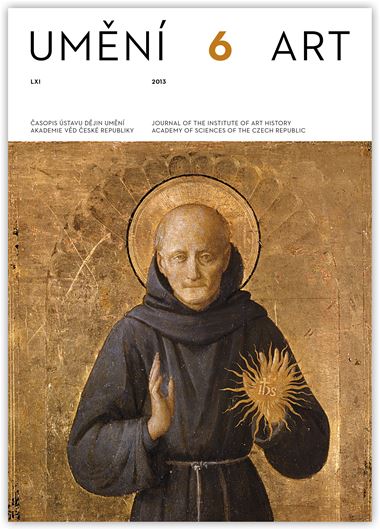Martin Zlatohlávek
From Raphael to Michelangelo: Early 16th-Century Roman Drawings in the Collections of the Czech Republic
The author examines three drawings that document creative tension or collaboration, and considers questions of their subject matter. A drawing of Amor at the Moravian Gallery in Brno, attributed to Raphael, is related to Amor in the Galatea fresco at the Villa Farnesina, and the position of the child’s body is repeated in works by Sebastiano del Piombo. To the familiar references the author adds Sebastiano’s studies of Venus and a Reclining Child at the Biblioteca Ambrosiana in Milan, on the reverse of which is a “copy” of a classical sculpture of Hercules, without the head and with one arm in a different position, recalling Raphael’s Amor. The same drawing includes a sketch of a centaur, who resembles the tritons in Raphael’s Design for the Border of a Salver, from the same period as Sebastiano’s drawings. Although relations between these two artists were strained, such works illustrate their influence on one another. Between Raphael and Giovanni da Udine it was more a matter of creative collaboration, with the latter adding paintings of flora and fauna to the former’s work. The drawing Nuts at the Moravian Gallery in Brno demonstrates how Giovanni worked on studies of specific subjects. In the drawing Seated Prophet with an Angel from Olomouc, a study, attributed to Sebastiano del Piombo, for the Borgherini Chapel at San Pietro in Montorio in Rome, we do not know the prophet’s identity. The author considers earlier analyses, which derived names from the chapel’s depictions of The Flagellation of Christ and The Transfiguration of Christ, and he interprets the figures above the chapel as Old Testament prophets who foretold these events. He compares them with a later version, A Prophet and a Sibyl by Federico Zuccari at the Oratorio del Gonfalone in Rome. Sebastiano del Piombo probably planned to use a prophet and a Sybil for the Borgherini Chapel; the Sibyl is depicted in the Olomouc drawing, but we do not know why she became a male prophet in the fresco. Above the chapel there are, then, two nameless prophets who foretell The Flagellation of Christ.
Full-text in the Digital Library of the Czech Academy of Sciences:
https://kramerius.lib.cas.cz/uuid/uuid:d17f6f43-d6f7-4de2-865a-e0671b494ae8
< back

